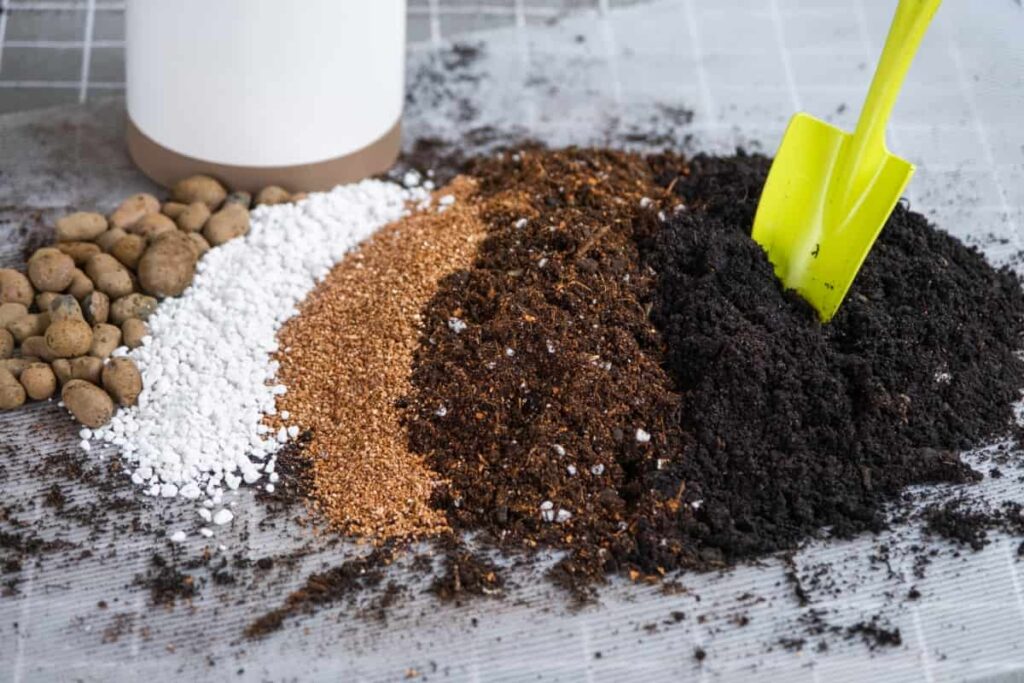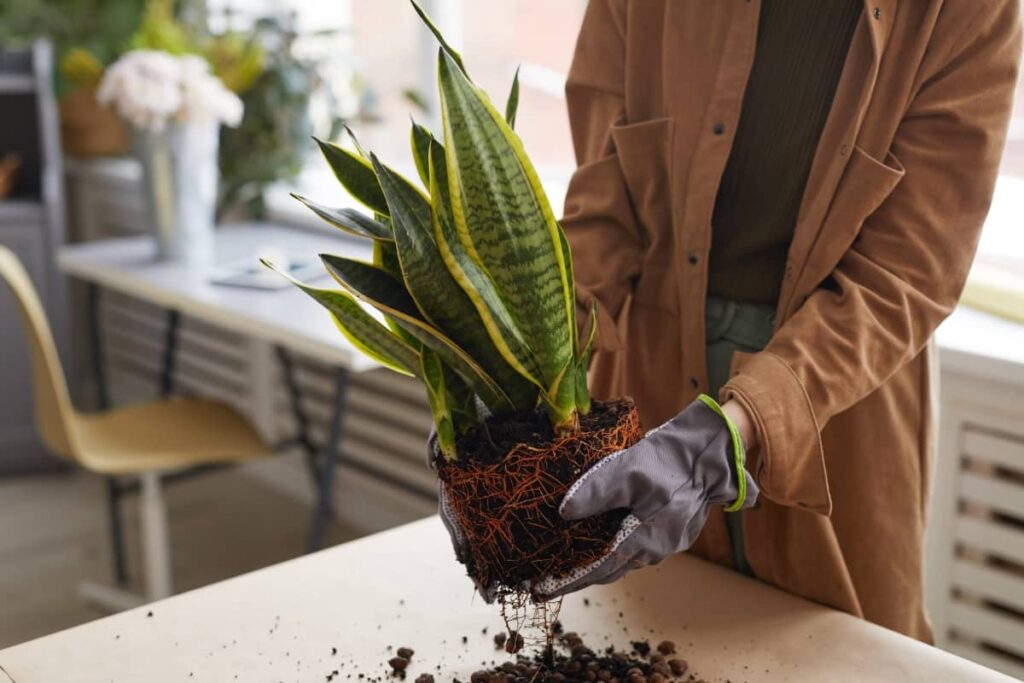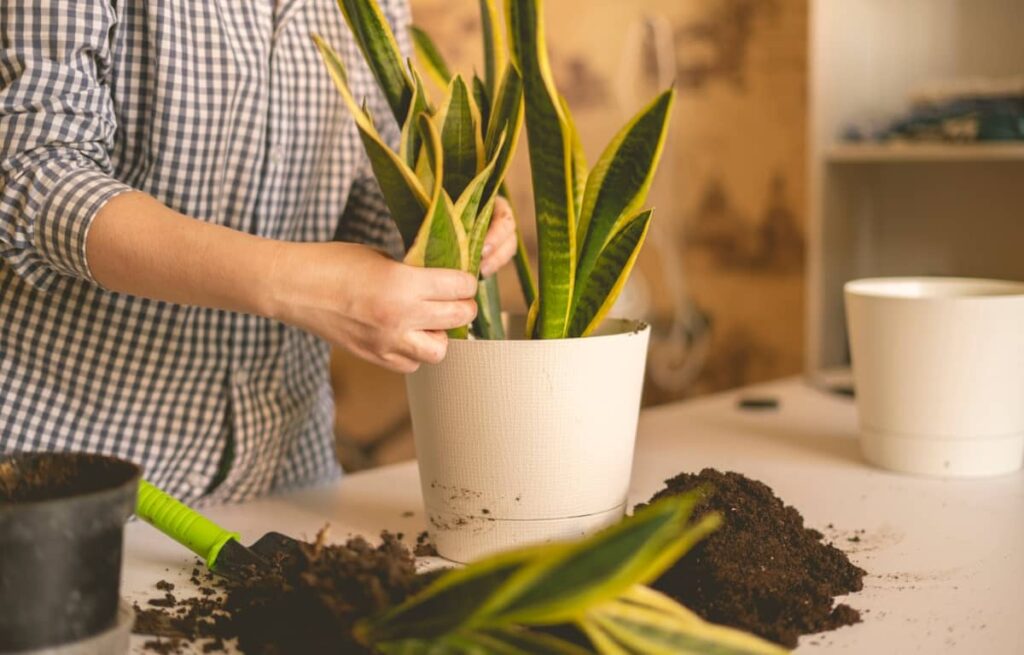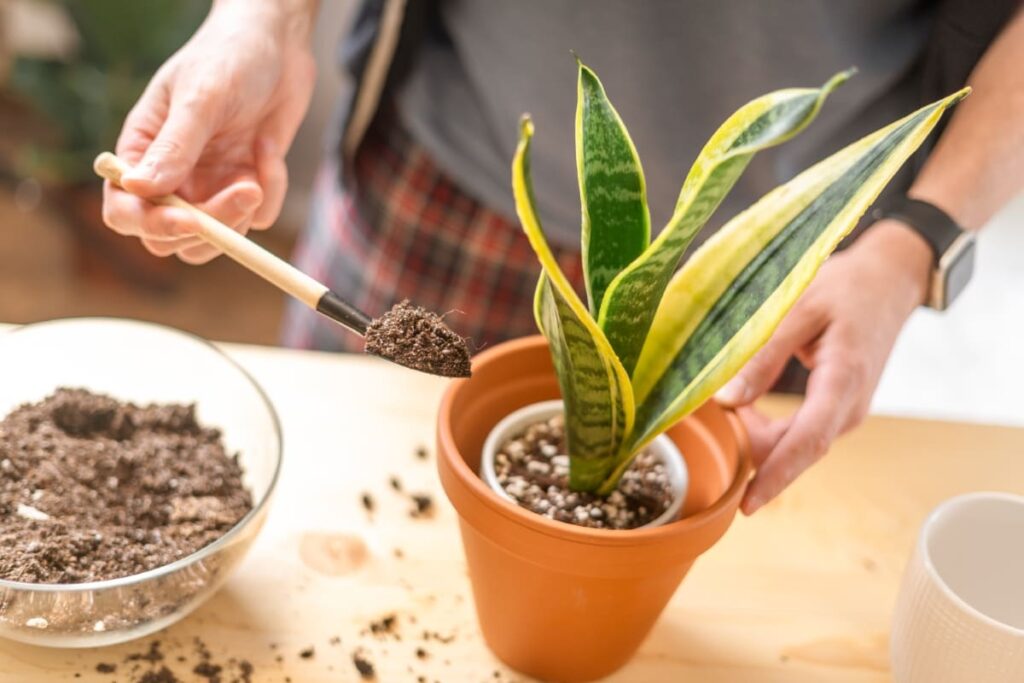Iat is scientifically known as Dracaena trifasciata. This broadleaf evergreen houseplant, known for its resilient nature and striking appearance, is a must-have in any indoor plant collection. It belongs to the Asparagaceae family, making it a unique addition to your home. Snake plants prefer well-draining soil that allows excess water to escape easily, preventing root rot. A good soil mix will also provide adequate aeration for the roots to thrive.

Understanding Soil pH and Texture for Snake Plants
Soil pH level refers to the soil acidity or alkalinity, impacting nutrient availability for your plant. These plants need acidic to neutral soil with a pH range of 6.0-7.0. Texture is equally important as it affects drainage and aeration around the roots. A well-draining soil mix prevents waterlogging, which can lead to root rot in Snake plants.
To achieve the ideal soil texture, aim for a loose and well-aerated mix that allows water to pass easily while retaining enough moisture for the plant’s needs. Testing your soil pH periodically using a simple kit from your local garden center can help you adjust as needed. A well-balanced soil mix provides essential nutrients that help your Snake plant thrive and grow strong. It creates an optimal condition for root development, which is crucial for overall plant health.
Key Components of an Ideal Snake Plant Soil Mix
Firstly, you’ll want to ensure that the mix is well-draining. Another important component is good aeration. Snake plant roots need oxygen to thrive, so including materials can help create air pockets in the soil for optimal root health. Adding organic matter can also help retain moisture while providing nutrients for your Snake plants. This balance of drainage and moisture retention is crucial for maintaining a healthy soil environment. Combining some slow-release fertilizer into your soil mix can provide long-term nutrition for your Snake plants without the risk of over-fertilization.
Commercial vs. Homemade Soil Mixes
Commercial soil mixes are convenient and readily available at garden centers, but they can sometimes contain additives or fertilizers that may not be ideal for your Snake plant’s needs. Homemade soil mixes, on the other hand, give you full control over the ingredients used and allow you to tailor the mix specifically to suit your Snake plant’s requirements.
In case you missed it: How to Fix Snake Plant Leaf-Related Issues: Natural and Organic Remedies

You can experiment with different ratios of components, such as potting soil, perlite, sand, and peat moss, to find the perfect balance that works best for your plant. Whether you select a commercial or homemade soil mix depends on your preferences and comfort level with mixing ingredients yourself.
Ingredients for a Perfect Snake Plant Soil Mix
Start with a well-draining base, such as succulent or cactus potting mix, to prevent waterlogging and root rot. Incorporate perlite or coarse sand to improve aeration and drainage in the soil. Adding organic matter can help retain moisture without causing soil compaction. Vermiculite or pumice can also be beneficial for promoting healthy root growth by enhancing nutrient retention.
To provide essential nutrients, consider mixing in slow-release fertilizer pellets specifically formulated for indoor plants. You can also addition with a balanced liquid fertilizer during the growing season to keep your Snake plant thriving.
Step-By-Step Guide to Mixing Your Own Snake Plant Soil
- Start by gathering your ingredients – a mix of well-draining components like perlite or coarse sand, along with organic matter such as peat moss or coconut coir.
- Next, grab a large container and combine your ingredients in the right proportions. Aim for a light and airy texture that allows water to flow through easily while holding enough moisture for your Snake plant’s needs.
- Mix everything carefully to ensure an even distribution of materials. Take your time, and don’t rush this step. Consistency is important to creating the perfect soil mix for your plants.
- Once you’re satisfied with the blend, fill up your pot with the soil mixture, leaving some space at the top for watering. Gently pat down the surface to remove any air pockets before placing your Snake plant in its new home.
Adjusting Soil Moisture for Optimal Snake Plant Health
Adjusting soil moisture is crucial for ensuring your Snake plant thrives. These plants prefer slightly dry conditions, so it’s essential to find the right balance. Overwatering the Snake plant can lead to root rot and other issues, while underwatering can cause dehydration. To adjust soil moisture levels, start by checking the top inch of soil regularly. If it feels dry to the touch, it’s time to water your Snake plant.
In case you missed it: Snake Plant Division: How to Divide and Multiply Your Plants

If the growing soil still feels moist, hold off on watering to prevent overhydration. Consider using a well-draining soil mix that allows excess water to escape easily. This helps prevent waterlogged conditions that can harm your plant. Additionally, pots with drainage holes promote healthy airflow and prevent water buildup at the roots.
The Role of Drainage in Snake Plant Soil Mix
Proper drainage is important to the soil mix for your Snake plants. Because these resilient plants don’t like being waterlogged, excess water can affect root rot, a common issue that can be avoided with the right soil mix. Proper drainage is important for excess water to escape, preventing the Snake plant roots from sitting in soggy soil for too long. This ensures that your Snake plant’s roots stay healthy and vibrant, promoting overall plant growth. When mixing your own Snake plant soil, make sure to include ingredients like perlite or coarse sand to improve drainage.
When to Repot Your Snake Plant: Signs and Soil Refreshment
Keep an eye out for signs that your Snake plant is outgrowing its container. If you notice Snake plant roots growing through the drainage holes or pushing up against the sides of the pot, it’s definitely time to consider repotting. Another indicator that your Snake plant needs a new home is if it starts to become top-heavy and prone to tipping over. This could mean that the root system has become too large for the current pot size, affecting stability.
In case you missed it: Snake Plant Care in Winter: Tips for Keeping Your Plant Healthy

When repotting your Snake plant, remember to refresh the soil mix as well. Over time, nutrients in the soil can deplete, so giving your plant fresh soil will help promote healthy growth and vitality.
Common Soil Mix Mistakes and How to Avoid Them
Many plant owners make the common mistake of using regular soil, which can lead to poor drainage and root rot. Another mistake is overwatering, which causes the roots to suffocate and eventually die. Using a potting soil mix that retains too much moisture or lacks proper aeration can also be detrimental to your Snake plant’s well-being. Additionally, not repotting your Snake plant when needed can result in stunted plant growth and nutrient deficiencies.
To avoid these mistakes, opt for a well-draining soil mix specifically designed for succulents like Snake plants. Regularly check the plant roots for any signs of overcrowding or damage, which can indicate repotting needs. By following these guidelines for your Snake plant’s needs, you can create an optimal growing environment that promotes strong, healthy growth and minimizes the risk of common issues like root rot.
- Profitable Village Farming Business Ideas in 2024
- High-Yield Aquaculture: Fast-Growing Fish for Farming
- Effective Fish Pond Construction Techniques for Beginners
- Irrigation and Water Management in Pineapple Farming
- Blossom to Harvest: Mastering Flowering and Pollination in Papaya Farming
- Pig Fattening Essentials: From Selection to Sale for Beginners
- Raising Wagyu Cattle: A Complete Guide for Premium Beef Production
- Soil Types and Their Water Holding Capacity
- Optimizing Irrigation Schedules for Coconut Groves for Enhanced Yield
